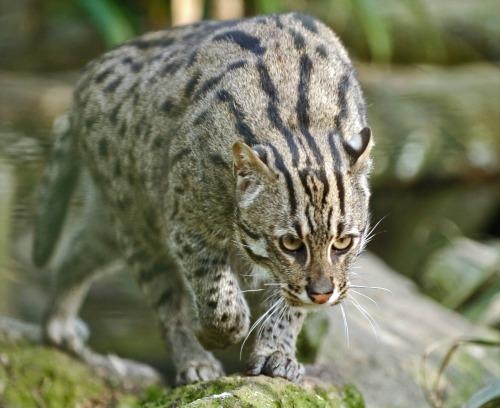Fishing Cats | 25 Jun 2020
Why in News
The Odisha Government has started a two-year conservation project for Fishing Cats in Bhitarkanika National Park.
- Like several other rare species, little is known about fishing cats in the wild.
Key Points
- Scientific Name: Prionailurus viverrinus.
- Description:
- It is twice the size of a house cat.
- The fishing cat is nocturnal (active at night) and apart from fish also preys on frogs, crustaceans, snakes, birds, and scavenges on carcasses of larger animals.
- The species breed all year round.
- They spend most of their lives in areas of dense vegetation close to water bodies and are excellent swimmers.
- Habitat: In India, fishing cats are mainly found in the mangrove forests of the Sundarbans, on the foothills of the Himalayas along the Ganga and Brahmaputra river valleys and in the Western Ghats.
- Threats:
- Habitat Destruction: A major threat for fishing cats is the destruction of wetlands, their preferred habitat.
- Shrimp Farming: Shrimp farming is another growing threat to mangrove habitats of the Fishing Cat.
- Hunting: This unique cat also faces threats from hunting for meat and skin.
- Ritual Practices: Tribal hunters indulge in ritual hunting practices throughout the year.
- Poaching: It is also occasionally poached for its skin.
- Poisoning: Indiscriminate trapping, snaring and poisoning.
- Protection Status:
- IUCN Red List: Vulnerable. Despite multiple threats, the Fishing Cat was recently downlisted to “Vulnerable” from “Endangered” in the IUCN Red List species assessment.
- CITES: Appendix II
- Indian Wildlife Protection Act, 1972: Schedule I
- Conservation Efforts:
- The Fishing Cat Project, launched in 2010 started raising awareness about the Cat in West Bengal.
- In 2012, the West Bengal government officially declared the Fishing Cat as the State Animal and the Calcutta Zoo has two big enclosures dedicated to them.
- In Odisha, many NGOs and wildlife conservation Societies are involved in Fishing Cat research and conservation work.
